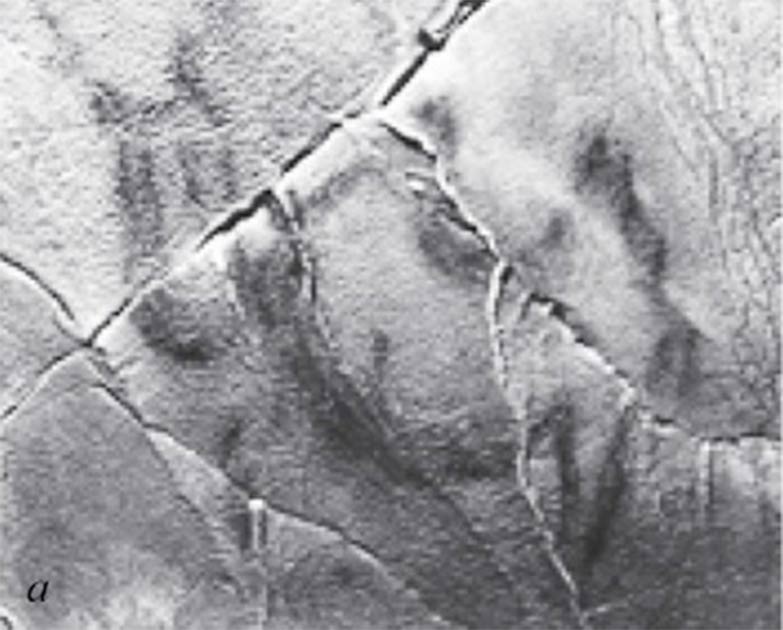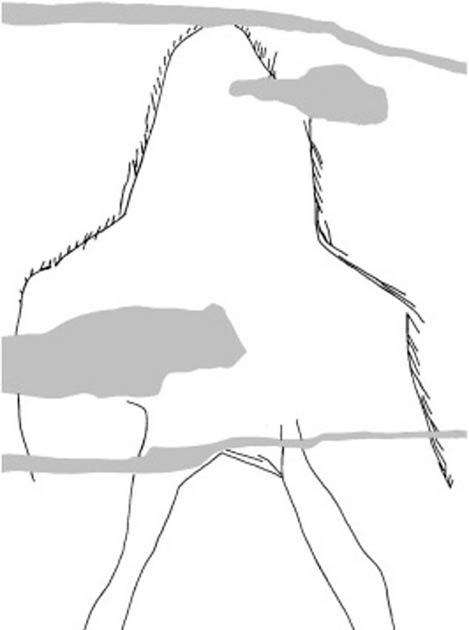Stone Age Etchings of Camel Fight Found on Siberian Mammoth Tusk
Ancient engravings etched onto a 13,000-year-old mammoth tusk have been examined and are believed to include the oldest known images of camels in Asia. Several ancient camel etchings on the tusk, one of which depicts a violent camel fight, are offering experts an insight into the world of ancient Siberians. The images are opening windows on the culture and society of prehistoric nomads.
The discovery of mammoth tusks is quite common in Siberia. The tusk with the graven images was found in Western Siberia on the lower reaches of the Tom River. It was unearthed in 1988 during a construction project and it was stored at Tomsk State University. At the time, the tusk was not properly studied, or stored in the correct conditions, and the tusk itself began to crumble and deteriorate. Luckily some researchers took an interest in the 5-foot-long tusk. What they found was amazing.

The ancient mammoth tusk was found in Siberia in the 1980s. It had been left in storage at Tomsk State University until the researchers began their investigation. Source: Yury Esin/F. Monna
Both Mammoth Tusk and the Artwork Date to 13,000 Years Ago
The study was conducted by experts from the Khakassian Research Institute for Language, Literature and History in Russia. Archaeology Research in Asia reports that “Radiocarbon dating by AMS reported the age of the tusk as 13,100–13,005 Сal BP (95% confidence level).” They found images of pairs of camels and an anthropomorphic image. By examining their style, the team established that they too were made around 13,000 years ago.
The camels are almost identical in their design to images of camels that have been discovered in the Kapova cave, in the Ural Mountains, in European Russia, that date back almost 19,000 years. The Daily Express quotes the Russian researchers as saying that “The comparative analysis of the stylistic features of the camel figures shows that they correspond to the age of the tusk itself.”


Images of camels and other animals have been discovered in caves in the southern Urals. (Yuri Esin)
Earliest Drawing of Camel to Have Been Discovered in Asia
The researcher claim that the engravings on the ancient Siberian ivory “are the earliest known drawings of the animal ever found in Asia” reports the Daily Mail. One of the images is that of a pair of camels who appear to be fighting. They are wrestling with their long necks. This typically occurs during the mating season when males battle it out to secure a female. The image may depict captured camels fighting and this may have been related to prehistoric beliefs about the life cycle and the seasons. Camel-wrestling is still a popular sport in Turkey and elsewhere.
There seem to be wounds and arrows on one of the pairs of camels. This would indicate that they were being hunted by ancient humans. The New Scientist reports that the researchers believe that the ivory’s anthropomorphic image “may portray a human wearing a camel disguise.” This may have been an effort by the hunter to get closer to the camels or even capture them. A camel disguise could have helped them to sneak up unobserved on a herd of wild camels.

The anthropomorphic image etched into the tusk could portray a human wearing a camel disguise. (Yury Esin)
Camel Etchings Made by Nomadic Siberian Hunters
Based on the evidence, it seems that the society that produced the artworks was probably nomadic. According to Archaeological Research in Asia “the discovery of the engravings in this region is consistent with the theory of mobile population groups moving to western Siberia from the periglacial steppe to the south in the Late Upper Palaeolithic.” Small groups of humans probably followed the herds of camels and other animals on their seasonal migrations and hunted them for food.
- 15,000-Year-Old Paleolithic Rock Art Gallery Identified On Russian Border
- A Double-humped Camel Provides Clues to Long-distance Paleolithic Travel
- Boy Finds 1,000-Year-Old-Message Written in Runes on Pendant Made of Mammoth Bone
The engravings have proven challenging to study. Yury Esin, who took part in the study, told the Daily Mail that the images “have very thin and shallow lines, making them barely visible and tedious to trace and the engravings are on the surface of a round, long, curved and heavy object.” The team have taken a series of photographs to understand how the artworks were created. It is theorized that they were created using a very sharp cutting tool, that had an exceptionally fine point and that the artist rotated the piece of ivory as he or she worked.


Camel etchings show fighting camels which could represent the mating season. (Yuri Esin)
Using Prehistoric Art to Understand Our Ancestors
Esin is quoted by the Daily Mail as saying that “all in all, the figures of the animals are quite realistic and demonstrate a good knowledge of the subject.” The similarities with other examples of camel images in the Upper Paleolithic and later eras is striking. This would suggest that the engraver of the images was not only keenly observing the camels but that he or she was part of a culture that covered a large area of Eurasia.
This study demonstrates how the art of the past can help us to understand our distant ancestors. The images are still being studied and they may reveal more about Siberia in the Paleolithic period. Several questions remain related to the mammoth tusk, such as whether the images of camels were used in rituals and ceremonies.
Top image: Main: Camels fighting. Credit: fraenzken / Adobe Stock. Inset: Camel etchings show fighting camels which could represent the mating season. Credit: Yuri Esin
By Ed Whelan



















